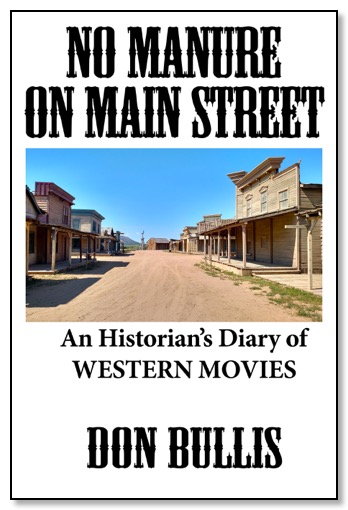An Historian's Diary of WESTERN MOVIES
by Don Bullis

464 pages
$32.95/PB (978-1-943681-38-9)
“…[T]he best thing about this book is ... it’s like sitting at a table, favorite beverage at hand, and chewing on what you like about Westerns and what you never will ever agree on.” — Ollie Reed, Jr.
Folks who watch Western movies are often obliged to suspend any sense of disbelief they possess. Guns are often used on the silver screen that had not yet been invented at the time the movie is set. Characters in the Bonanza series used weapons that would not be available for a decade or more. Six shot revolvers are frequently able to shoot many more times than that, without reloading. John Wayne fired thirteen times without reloading in the final gunfight in The Sons of Katie Elder. Actors are frequently decked out in attire that was created by Hollywood costumers rather than modeled after photographs of actual late nineteenth century citizens, cowboys and otherwise. Recall Roy Rogers and Gene Autry. Clothing is always clean and in good repair at a time when laundry facilities were few and far between, as were seamstresses. One never sees Hopalong Cassidy in a dirty or wrinkled shirt. Most common, though, is the fact that there is almost never any manure on the main streets of western movie towns. Anyone even remotely familiar with horses knows that such an hygienic view of frontier settlements is entirely impossible.
In terms of the historical settings, viewers are often exposed to events that could not possibly have happened within specific historical contexts. Many, if not most, western movies do not have any historical references beyond the fact that they were set sometime in the late 19th century, usually in the period after the Civil War in 1865, and in the western part of the North American continent, from Canada to Mexico; that and the players generally wore broad-brimmed hats and high-topped, high-heeled, boots, rode horses and carried Colt pistols.
While Westerns are primarily intended as entertainment, altogether too often they leave viewers with a skewed picture of life on the American frontier. This book considers some of the more egregious distortions in nearly 250 Westerns and discusses plot-lines and provides general over-all ratings based on quality of production.